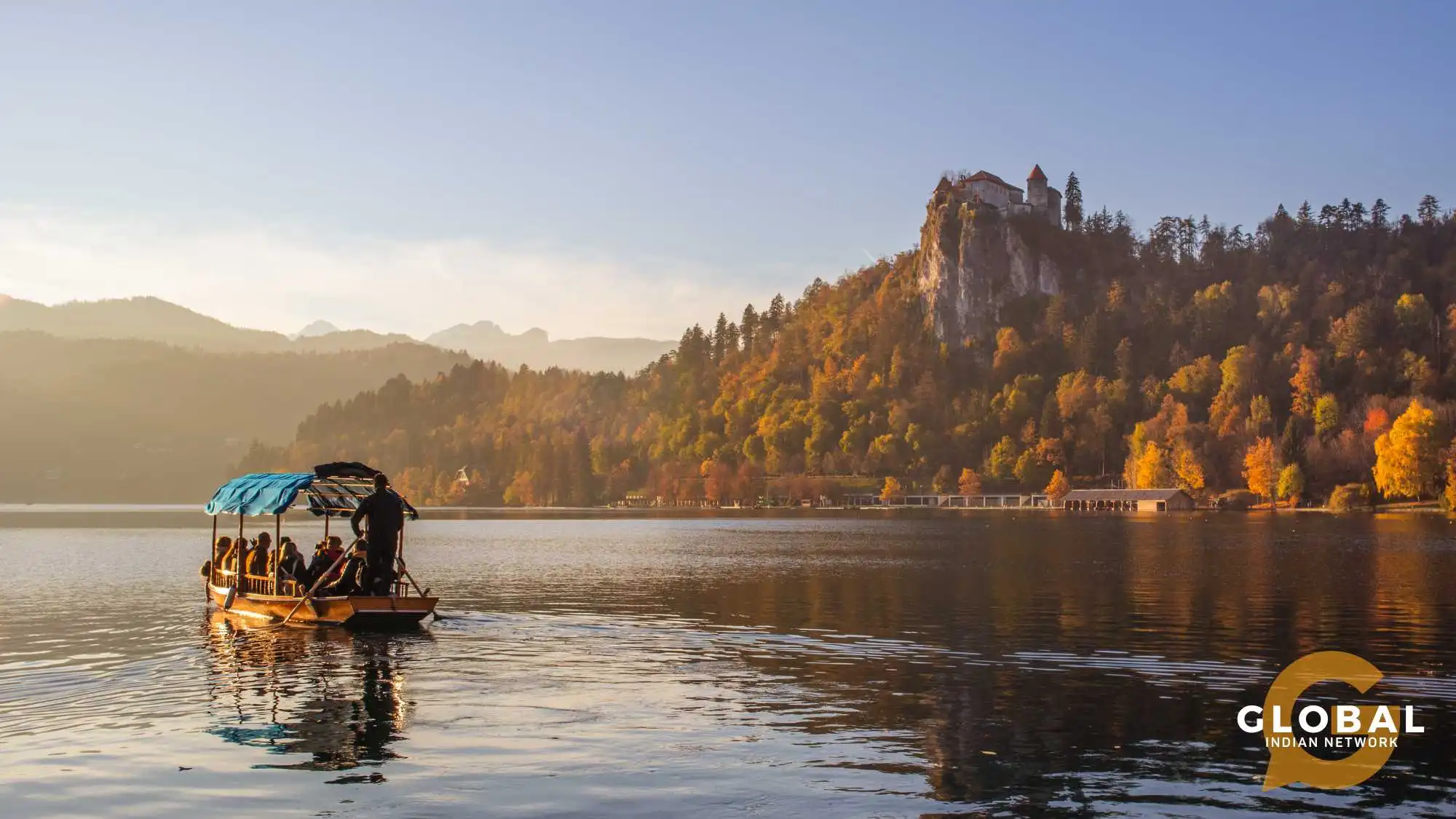Slovenia, the small country at the centre of the European continent, has historically been the cultural crossroads for numerous ethnic groups, empires and tribes. From the Celts, Romans, Byzantitians, and Carolingians to the Austro-Hungarian empire, this small territory boasts a cultural history as rich and diverse as its topographical orientation. Despite numerous influences, many of Slovenia’s traditions have emerged independently, developing from local ethos and interests.
Read on to discover more about the vibrant world of Slovenian traditions that have persisted into the modern world.
Table of Contents
Slovenian Traditions: Bee Keeping
Apiculture or beekeeping is a long-enduring tradition in Slovenia, which has become integrated into its national identity. It is a prime symbol of the country’s sustainable culture, which strives for harmonious coexistence with nature by boosting local farm-grown products. This tradition descends from the 18th-century beekeeping instructor Anton Janša, whose birthday, May 20, is now celebrated as World Honey Bee Day.
Background
The tradition of beekeeping originates in the 7th-century trade of beekeepers in Carantania (the first Slavic nation) who supplied honey to counties, monasteries and churches all over Europe. Favoured by the biodiversity and climactic conditions of the region, a new variant of beehive evolved, further developed and upgraded by Anton Janša.
The Slovenian bee belongs to a species known as the Carniolan bee (Apis mellifera carnica), famed for its sense of orientation, immutability, non-aggression and impressive work ethic. Its value to Slovenian cultural heritage is so integral that Slovenian law protects it under special legislation. In an initiative to honour this traditional legacy and raise awareness about the importance of bees to the environment, the Beekeepers Association of Slovenia sent a proposal to the United Nations in 2018 to commemorate Anton Janša’s birthday as World Honey Bee Day.
Honey Production
Among Slovenian inhabitants, you will find about five beekeepers for every thousand families. Thanks to its advanced beekeeping techniques, Slovenia produces a wide variety of high-quality honey in incredible flavours such as acacia, lime, chestnut, fir, spruce, floral and forest. The three main varieties produced here are Slovenian honey, the Kočevje forest honey, and the honey from the Karst region.
Local honey is used extensively in many traditional cuisines, including liquor and ale. It is also featured in exhibitions and stalls on special occasions and festive markets.
Beekeepers also produce a host of miscellaneous products from the byproducts of honey production. Examples of such products are royal jelly, a stimulant secreted by young bees for their queen, propolis, a natural antibiotic, and obviously, the delicious comb honey. The edible Beeswax is another great byproduct which is used both in cooking and in beeswax candles.
Beehive Painting
The unique Slovenian tradition of beehive painting also traces its origin back to the apiculture master Anton Janša, who devised this innovative art of painted beehive panels to combine his passion for beekeeping with his love of painting.
Beehive panel paintings usually depict scenes from idyllic Slovenian rural life and customs, such as dance and weddings. They may even feature themes and subjects from folklore, myth and religion, such as the Temptation of Adam and Eve in Paradise. Besides the purpose of artistic expression, hive painting has a practical role in helping bees find their way back into their hives and keepers distinguish between colonies.
Bobbin Lacemaking
The Slovenian handicraft technique of Bobbin lacemaking, involving twisting thread around special wooden sticks known as bobbins, has been preserved and transmitted down generations as an artistic skill. It secured an inscription on the Representative List of the Intangible Cultural Heritage of Humanity in 2018.
This beautiful lace is used as embellishments in domestic tapestries, clothing, and fashion accessories. Today, there are around 120 bobbin lacemaking societies in Slovenia, which include trained bobbin lacemakers and their students and apprentices.
Salt Farming
The saltworks of Sečovlje and Strunjan in Piran are among the last few remaining along the Mediterranean coast, which preserves the traditional medieval method of harvesting salt. This process begins around early June and involves the arduous yet environmentally beneficial method of layering the ground with petola and raking salt with wooden scrapers. It produces three varieties, namely, traditional “first salt”, “Piran salt”, and “fleur de sel”, or ‘salt flower’.
The salt produced in Piran is extensively used in Slovenian dishes, adding to them a local charm. Given its healing qualities, it is also commonly utilised as an ingredient for exfoliating massages in wellness spas.
Grape Harvest
Famed for its luscious vineyards, Slovenia boasts a rich tradition of manual grape harvest, which brings together families and generations in communal farm activity. There can be several harvests throughout the year, ranging from mid-summer to winter, depending upon the acidity and sugar requirements of different varieties of wine. At the end of harvest, families indulge in a customary ‘likof’, a celebration party, with some potica and wine, accompanied by music.
The annual Wine Queen contest is a testimony to the importance of wine culture among Slovenians. Every year, a wine queen is elected from among young and bachelor women, well-versed in Slovenian wine, wine-serving and tasting etiquette.
The International Festival of Roasted Potatoes
The World Roasted Potato Festival is a tradition unique to Slovenia, which has been operating for more than 21 years by the initiative of the Society for the Recognition of Roasted Potatoes as a Distinct Dish. This festival, hosted in a different city each year, brings chefs and cooks from all over the city together in a culinary celebration, where over 30 varieties of roasted potato dishes are prepared and served with wine and meat as a side dish.
Shrovetide Carnivals
During the Shrovetide season, the streets of large cities and towns in Slovenia transform into a stage for carnivalesque delight and exuberance.
At the Ljubljana Dragon Carnival, you will find an enormous green dragon trailed by a masquerade of people dressed as characters from Celtic folklore. Similar parades embark throughout the country - the Istrian Carnival of Mediterranean Slovenia, the annual carnival celebration at the Maribor central square, or the Prešeren Carnival in the old town centre of Kranj.
Kurents are well-known Carnival characters, considered harbingers of spring and warmth, who enjoy an almost sacred place in Slovenian culture. Recognisable for their typical Kurentija attire comprised of a sheep-skin suit, knee-high stockings, and a stick spiked with hedgehog spines(ježevka), you can find them at the Kurentovanje celebrations in Ptuj. Its ritual excursions around Slovenian homes, usually conducted between Candlemas and Ash Wednesday, have been designated among the UNESCO List of Intangible Cultural Heritage of Humanity.
The Cow Ball
The Cow’s Ball ceremony in Bohinj is a long-persisting tradition celebrating the end of the grazing season. Attended by over ten thousand visitors annually, the event involves greeting Alpine shepherds as they return with their cattle from the mountains. The after-greeting celebration involves music and dance performances - folk, orchestras, and brass bands - along with delicious local food and Slovenian wine.
Šranga
Slovenian weddings feature an intriguing custom where an obstacle called Šranga (a wooden barrier), among other objects such as logs, wagons, and even tractors, are used by local men to block the groom’s path to the bride. This fun custom is a way to playfully thwart the bridegroom’s efforts to get to his bride, bringing some lighthearted mirth into wedding celebrations.
The groom must either cut through the wooden object or bribe his way into the bride’s house, but the pranks do not end there. He is sometimes further tricked by passing off some other woman dressed in wedding attire as the bride, and he must strive through further hurdles to get through to her.
Day of the Dead
The Slovenian Dan Mrtvih, or Day of the Dead, is a characteristically Catholic holiday commonly known as All Saints’ Day, All Souls Day or Remembrance Day. Observed on November 1, it corresponds with the American All Hallows Eve and Mexico’s Día de Muertos. More sombre than its American counterpart, Slovenians, on this national holiday, visit graveyards to revere their deceased loved ones and ancestors with friends and family by lighting candles before their graves.
Conclusion
Slovenia is a prime example of the synthesis of modern technology with tradition. Even as contemporary lifestyle and global influences continue to shape the cultural landscape, Slovenians have maintained a strong bond with their heritage. From festive celebrations and culinary practices to folk art, Slovenian traditions' endurance and easy integration into the present ethos speaks of a nation deeply rooted in its history even as it embraces the ever-evolving future.
FAQs
What culture is Slovenia?
Slovene culture combines Germanic, Romance, and predominantly Slavic cultures. The historical influence of diverse ethnic groups, such as Romans, Germans and south and west Slavs, has made Slovenia a merging point for various cultures.
What are 3 interesting facts about Slovenia?
1. One in twenty families in Slovenia maintain beehives.
2. Slovenia is one of the most active nations, with every citizen engaging in physical activities for at least 3 hours per week.
3. The Postojna Cave in Slovenia is home to the only living Olm, famously known as the human fish or the baby dragon.
What are Slovenians famous for?
Slovenians are famous for their efficient local food production practices and commitment to the farm-to-fork strategy. Their delectable cuisine is made entirely from homegrown or farm-sourced ingredients and is consequently high-quality and healthy. The Slovenians are also known for being the epicentre of the beekeeping tradition in Europe.










[…] such times, as travellers, we advise you to go out while exploring world cultures and traditions because why not? It will not only take you to a new city but to new people, with different food, […]
[…] live on a planet where we meet with new people who come from different cultures and traditions daily, containing vast factors different from ours. This happens because of the multiple cultures […]
[…] center boosts its worldwide standing. Doha, its capital, is a vibrant metropolitan city where tradition meets modernity. The cityscape is adorned with architectural marvels like the iconic Museum of Islamic Art, […]
[…] concept of gender and women challenging societal norms in the modern world has started to make a significant difference in restricting violence against women, changing social […]